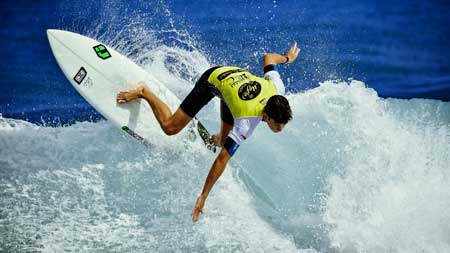Find out what level of surfing you have
If you tell us about your skills and experience before coming to MojoSurf we will be able to determine your surfing level. This will allow us to plan your training time to maximise your improvement, we will prepare surf lessons to suit your profile.
“Intermediate level” can mean anything from a few days to a couple of decades of surfing experience. That’s why we use a level system from 0 to 5. When you’re here, you will learn alongside other surfers at the same level as you. We never mix surfers of different levels.
Here, we explain the specific skills of each level so you can let us know which one you identify with.
Level 0
For those who have never surfed before and would like to give it a try, or even for those surfers who have tried to learn on their own without any professional guidance.
In the first class, we will start with a theoretical-practical explanation on the beach from scratch.
Level 1
Improving basic techniques to ride your first waves.
You will learn:
- How to select and catch white waters (foam) without assistance.
- Efficient and safe paddling through the white water.
- The differences between trimming and carving.
- The “Stand Up” and basic stance, the “Functional Stance”
- Making small “directional changes” on the white water with the correct gaze.
- Basic safety rules.
If you master all the techniques during your stay, we will move you to Level 2.
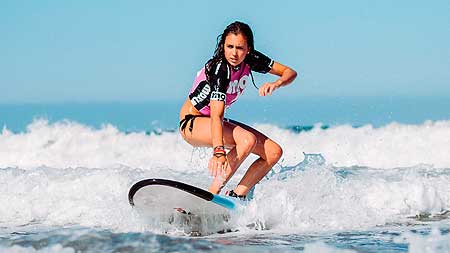
Level 2
Enter and ride your first unbroken waves (Green waves).
Minimum requirements:
Being able to perform a “Pop Up” without using your knees and ride the white waters to the end, using the correct gaze, and controlling your arms for direction (Functional Stance).
You will learn:
- How to enhance your paddling technique to reach waves more successfully.
- How to use entry channels and pass waves (Turtle method).
- How to sit on the board and make a 180-degree turn to catch the wave.
- How to improve your body positioning (Functional Stance) while riding the wave.
If you master all the techniques at this level during your stay, we will move you to Level 3.
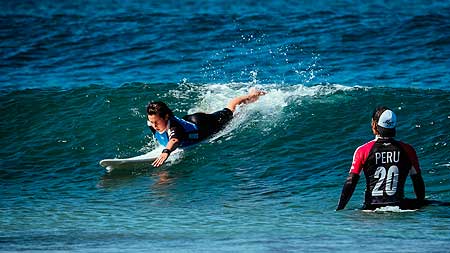
Level 3
Crossing walls and gaining speed.
Minimum requirements:
• Paddling correctly and catching waves unassisted.
You will learn:
- How to select the best waves, when to start paddling, and when to do the pop up.“Timming”.
- Techniques for “crossing waves and catching walls”.
- Surf etiquette, rules, and interaction among surfers.
- Generating speed on the wave (pumping).
If you master all the techniques at this level during your stay, we will move you to Level 4.
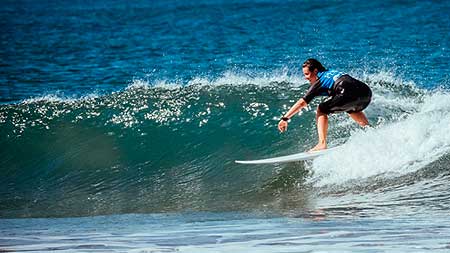
Level 4
Executing your first basic maneuvers.
You will learn:
- How to find the fastest “Trimming line”.
- Enhancing pumping techniques.
- Execution techniques for transitional maneuvers such as cut-Backs y floaters.
- Positioning yourself at the peak.
If you master all the techniques at this level during your stay, we will move you to Level 5.
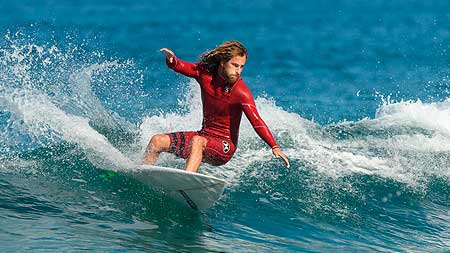
Level 5
Learn, improve, and enhance maneuvers in the critical section of the wave.
We identify the areas of surfing that present limitations for the surfer and help you discover your strengths. The goal is for you to leave Mojosurf capable of recognizing your own mistakes and self-training in the future.
Minimum requirements:
Mastery of cutbacks with fluidity.
You will learn:
- Surfing in the critical section of the wave with commitment, power, speed, and style.
- Executing various surfing maneuvers.
- Improving your “Flow”, combining the main maneuvers one after another without losing speed.
If, after your stay at this level, you want to learn and master competition techniques, you can move on to Level 6
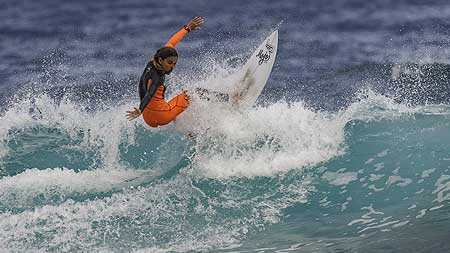
Nivel 6 (Competition)
“Improve Your Surf” Technification Program for competitions.
Designed for surfers who want to start or dedicate themselves to high-level competition, including island, national, and international competitions.
You will train in the following areas:
- Enhancing your skills and working on competition strategies.
- Analyzing weaknesses and turning them into strengths.
- Improving your surfing technique.
- Focusing on specific physical preparation.
- Detailed study of competition regulations.
- Training in more challenging waves.
- Sports nutrition guidance.
